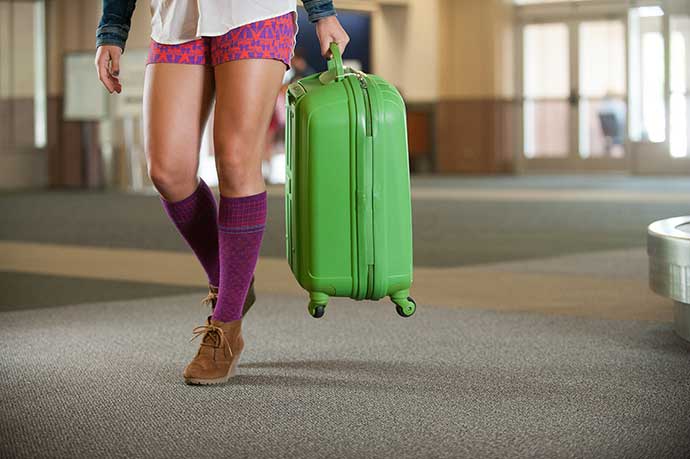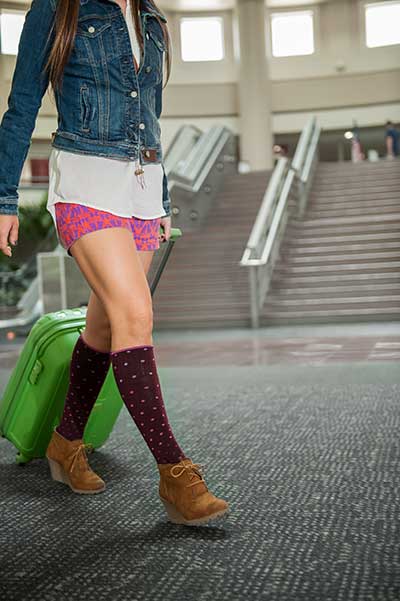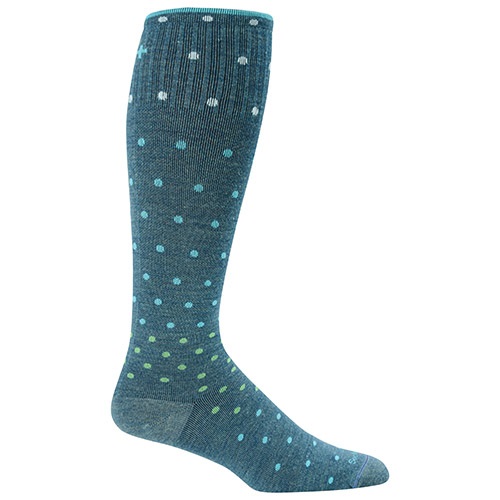 Whether you’re traveling for work or pleasure, long flights are the worst. You sit there for hours flicking through the grainy on-board flight entertainment options, trying to find something you haven’t seen/want to watch, while the planes air conditioning blows in your face. You’re normally crammed in a small row of seats between two strangers and fluctuate between eating too many snacks and feeling sick. When you finally can’t stand it anymore, you look down at your watch and realize the flights only half over and you have to start your cycle of movie watching and eating all over again!
Whether you’re traveling for work or pleasure, long flights are the worst. You sit there for hours flicking through the grainy on-board flight entertainment options, trying to find something you haven’t seen/want to watch, while the planes air conditioning blows in your face. You’re normally crammed in a small row of seats between two strangers and fluctuate between eating too many snacks and feeling sick. When you finally can’t stand it anymore, you look down at your watch and realize the flights only half over and you have to start your cycle of movie watching and eating all over again!
In addition to the boredom, flights that are four hours or longer can also be detrimental to your health. The cramped seating and narrow aisles means that many people aren’t moving around as much as they should be and the constant low-humidity air conditioning leaves many passengers dehydrated. This results in a decrease in blood flow through the body and an overall decrease in blood volume. This sluggish blood flow greatly increases your risk of developing a condition called deep vein thrombosis (DVT), especially if you have underlying health conditions, such as pregnancy or a previous stroke. Deep vein thrombosis (DVT) is a clot that either completely or partially blocks a larger vein, normally in the leg. Signs and symptoms of a DVT in the leg include unilateral heat, swelling, pain and redness.

One of the best ways to reduce the chances of getting a DVT is to invest in a pair of high-quality compression socks, like Sockwell Travel compression socks. A recent systematic review found that passengers wearing compression socks on long flights were at one tenth of the risk of developing a DVT compared to passengers who did or not wear compression socks. Compression socks help to prevent DVTs because it applies a gentle and constant pressure to the bottom of the leg, moving blood upwards towards the heart. In addition to travellers, compression socks have also become popular with athletes and workers that spend all day on their feet, such as nurses and security guards, because of their ability to prevent muscle fatigue, swelling and varicose veins.
There are two main categories of compression socks: medical grade and non-medical grade. Medical grade compression socks provide a higher degree of compression and can only be prescribed by a physician. They are generally only needed if you have severe venous circulation issues, have medical conditions that put you at a high risk of clots or need more precise fitting. Non-medical grade compression socks do not need a prescription and are more comfortable as they are slightly looser on the calf.
For the average traveller, non-medical grade compression socks, like Sockwell Travel compression socks, are perfect for preventing clots on long trips! These stylish socks come in a wide range of colours and styles (anything from plaid to polka dots) and their unique wool blend is specifically designed to stay comfortable for long periods by providing thermoregulation, odor control and moisture management. I also love that this company makes all of their products in the US and their HomeGrown Wool Initiative means that they acquire their high-quality, fine-micron merino wool from local sheep farmers to help to boost local economy. Use this size chart to choose the perfect socks for you based on your shoe size.
 In addition to investing in a pair of compression socks, here are some additional ways to keep your blood flowing and avoid any blood clot formation on your next long flight:
In addition to investing in a pair of compression socks, here are some additional ways to keep your blood flowing and avoid any blood clot formation on your next long flight:
- Drink lots of water to stay hydrated
- Wear loose, comfortable clothes to make sure you’re not cutting off any circulation
- Store your luggage overhead so you have the most room possible to stretch your legs
- Walk around when you can
- Do some leg exercises, such as pointing and flexing your feet about 10 times an hour.
- Avoid alcohol and sleeping pills
Summer is a time for travel, but unfortunately travel often comes with long-haul flights. Hours of being squished in a seat with decreased movement and constant recycled air can leave your blood circulation sluggish and blood volume depleted, increasing your risk of acquiring deep vein thrombosis. So this year, start your vacation right by investing in a pair of Sockwell Travel compression socks! These stylish socks, paired with some of the tips mentioned above, will decrease your risk of clots and will ensure that your blood stays flowing throughout your flight!
Happy travels!
Infomation taken from Sockwell, NHS, and John Wiley & Sons, Inc.



